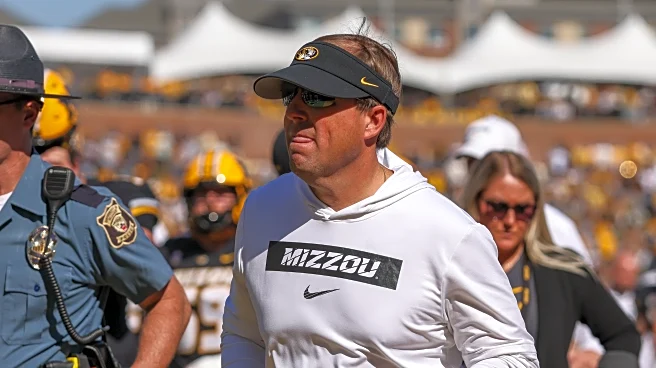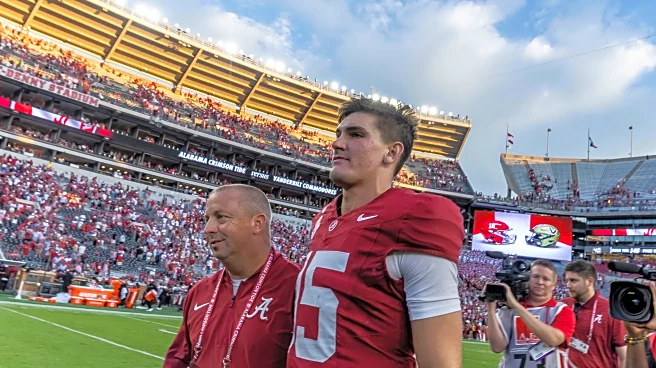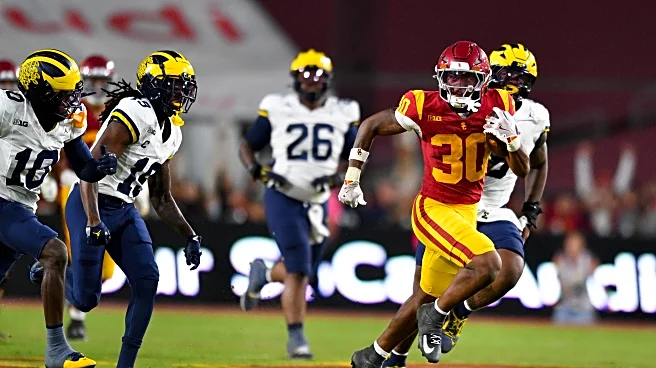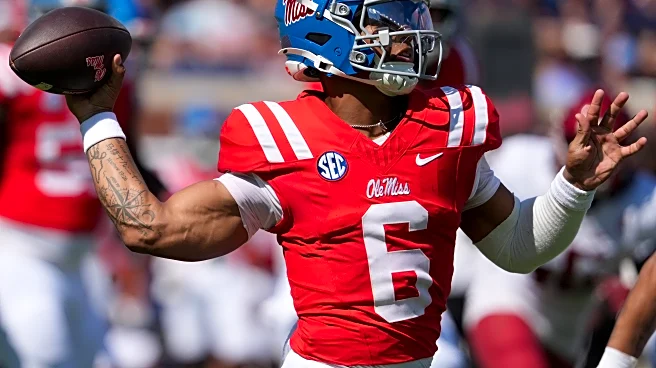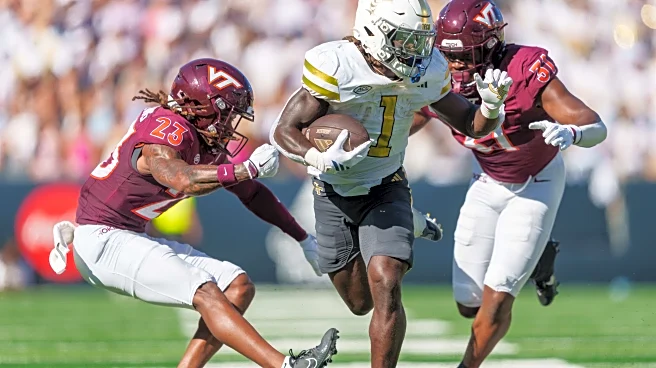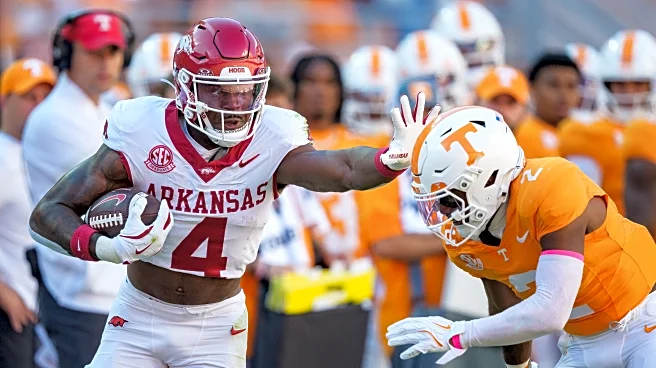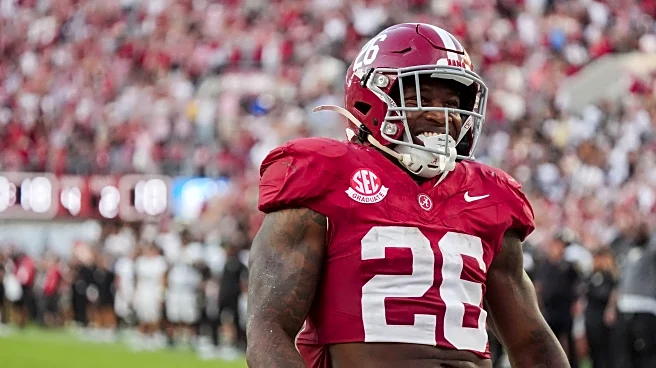What's Happening?
Ty Simpson, the quarterback for Alabama, has been recognized as a leading contender for the Heisman Trophy in the 2025 midseason college football awards. As a first-year starter, Simpson has demonstrated exceptional performance, completing 71% of his
passes and throwing 16 touchdowns with only one interception. His efforts have contributed to Alabama's 5-1 record and their No. 6 ranking in the AP Top 25. Simpson's standout performances include a perfect game against Louisiana-Monroe and a decisive game-clinching drive against Missouri. Other notable players in the midseason awards include Ahmad Hardy from Missouri, Makai Lemon from USC, and David Bailey from Texas Tech.
Why It's Important?
Ty Simpson's emergence as a Heisman Trophy contender underscores the significance of player development and the impact of new starters in college football. His success reflects Alabama's ability to cultivate talent and maintain a competitive edge in the sport. The recognition of other players, such as Ahmad Hardy and Makai Lemon, highlights the diverse talent across different teams and positions, showcasing the depth and competitiveness of college football. These midseason awards provide insight into potential future stars and the evolving dynamics of the sport.
What's Next?
As the college football season progresses, Ty Simpson's performance will be closely watched, with potential implications for Alabama's standing and his chances of winning the Heisman Trophy. The upcoming games, particularly against strong opponents, will test Simpson's abilities and could further solidify his position as a top contender. Additionally, the performances of other award recipients will be pivotal in shaping the narrative of the season and influencing team strategies and player development.
Beyond the Headlines
The midseason awards highlight the role of transfers and new starters in shaping team dynamics and success. The recognition of players like Joey Aguilar, who transferred to Tennessee, emphasizes the impact of player mobility and the strategic decisions made by programs to enhance their rosters. This trend reflects broader shifts in college football, where adaptability and strategic recruitment are increasingly crucial for maintaining competitiveness.





